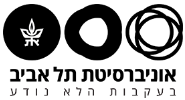פרופ' פלד היא פרופ' מן המניין בבית הספר לעבודה סוציאלית וחוקרת ביקורתית בתחום המגדר בעבודה סוציאלית. מחקריה וכתיבתה מתמקדים בהבנת האופנים בהם תפיסות חברתיות מגדריות מעצבות התנסויות וזהויות של גברים ונשים במצבי אלימות ושוליות חברתית—בייחוד אלימות במשפחה, אימהות במצבי שוליות, וזנות. הבט מרכזי נוסף בעבודתה המחקרית הוא פיתוח והערכת התערבות בתחומים אלו, בשיתוף עם אנשי המקצוע המעורבים בהן. היא מתמחה במתודולוגיות איכותניות הבנייתיות המאפשרות בחינה מורכבת ומעמיקה של חוויות ותפיסות בהקשרים אישיים, בינאישיים וחברתיים. בשנים האחרונות היא שותפה ומובילה יוזמות שונות להרחבת השיח המחקרי בנושא הזנות והמין בתשלום. מחקריה העכשוויים עוסקים בתהליכים המביאים גברים לשלם על מין ותפיסותיהם את משמעות התשלום, בהבנת ההיעזרות של בני נוער וצעירים בזנות, בסיוע לאנשים בזנות בתקופת הקורונה, בהבנת תפיסותיהם של עובדים בתחום ההתמכרויות ביחס לזנות בקרב מטופליהם ובפיתוח התערבות מיטבית לנשים בזנות סביב הריון ולידה. פרופ' פלד היא ממקימות האגודה הישראלית לחקר זנות, עבודת מין וסחר במין.
פרופ' עינת פלד
סגל אקדמי בכיר במנהלת בי"ס לעב סוציאלית
מנהלת בי"ס לעב סוציאלית
סגל אקדמי בכיר

מידע כללי
תחומי מחקר
- זנות ותשלום על מין.
- נוער ונערות במצבי שוליות וסיכון.
- אימהות במצבי שוליות: חוויה וזהות.
- הצטלבויות של זהות אבהית.
תחומי הוראה
- מחקר איכותני: פרדיגמות, תיאוריות ושיטות מחקר.
- הערכת התערבות.
- אלימות נגד נשים: היבטים תאורטיים ביקורתיים.
- אימהות: היבטים תיאורטיים ביקורתיים.

